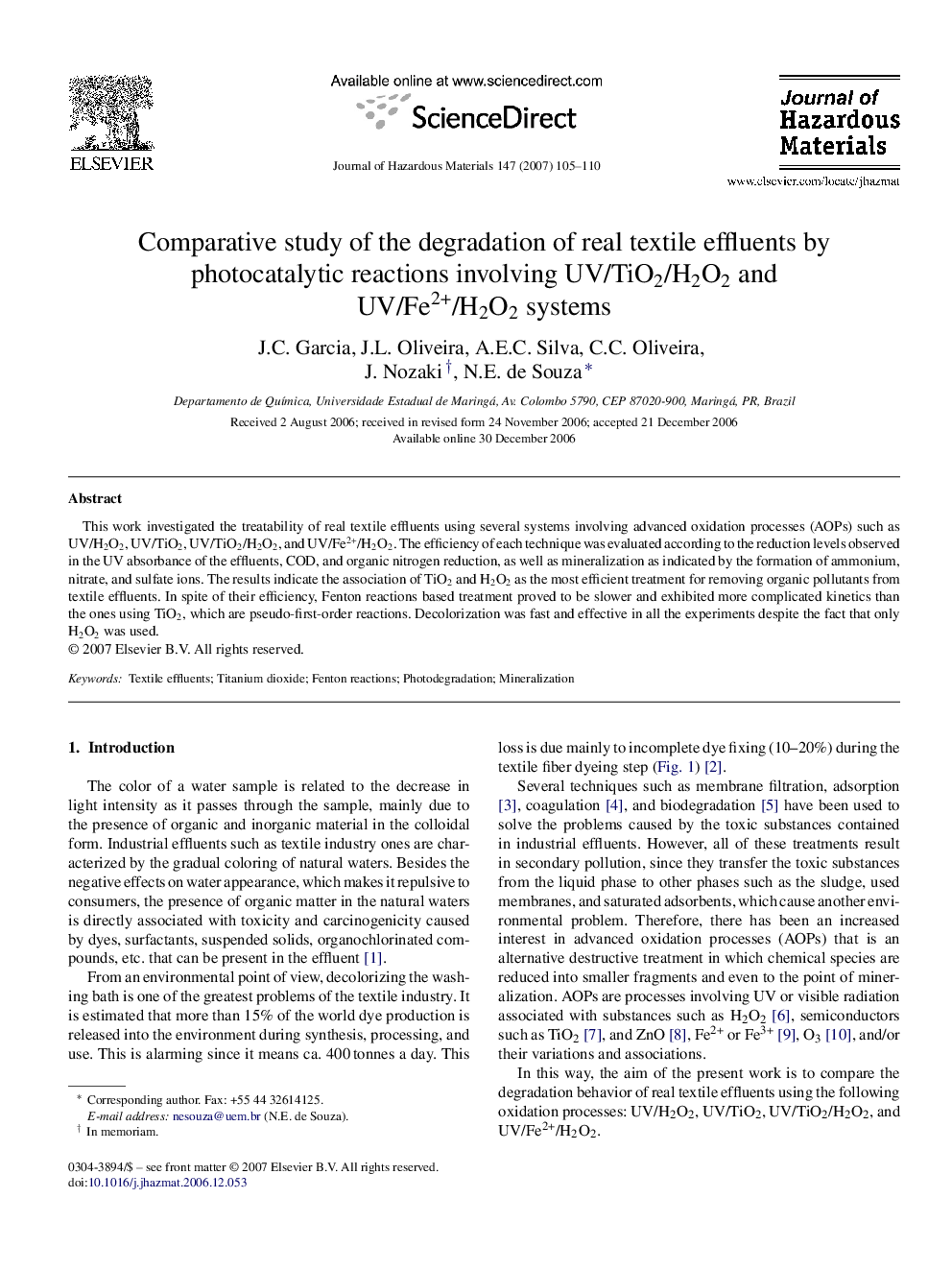| Article ID | Journal | Published Year | Pages | File Type |
|---|---|---|---|---|
| 584096 | Journal of Hazardous Materials | 2007 | 6 Pages |
Abstract
This work investigated the treatability of real textile effluents using several systems involving advanced oxidation processes (AOPs) such as UV/H2O2, UV/TiO2, UV/TiO2/H2O2, and UV/Fe2+/H2O2. The efficiency of each technique was evaluated according to the reduction levels observed in the UV absorbance of the effluents, COD, and organic nitrogen reduction, as well as mineralization as indicated by the formation of ammonium, nitrate, and sulfate ions. The results indicate the association of TiO2 and H2O2 as the most efficient treatment for removing organic pollutants from textile effluents. In spite of their efficiency, Fenton reactions based treatment proved to be slower and exhibited more complicated kinetics than the ones using TiO2, which are pseudo-first-order reactions. Decolorization was fast and effective in all the experiments despite the fact that only H2O2 was used.
Related Topics
Physical Sciences and Engineering
Chemical Engineering
Chemical Health and Safety
Authors
J.C. Garcia, J.L. Oliveira, A.E.C. Silva, C.C. Oliveira, J. Nozaki, N.E. de Souza,
